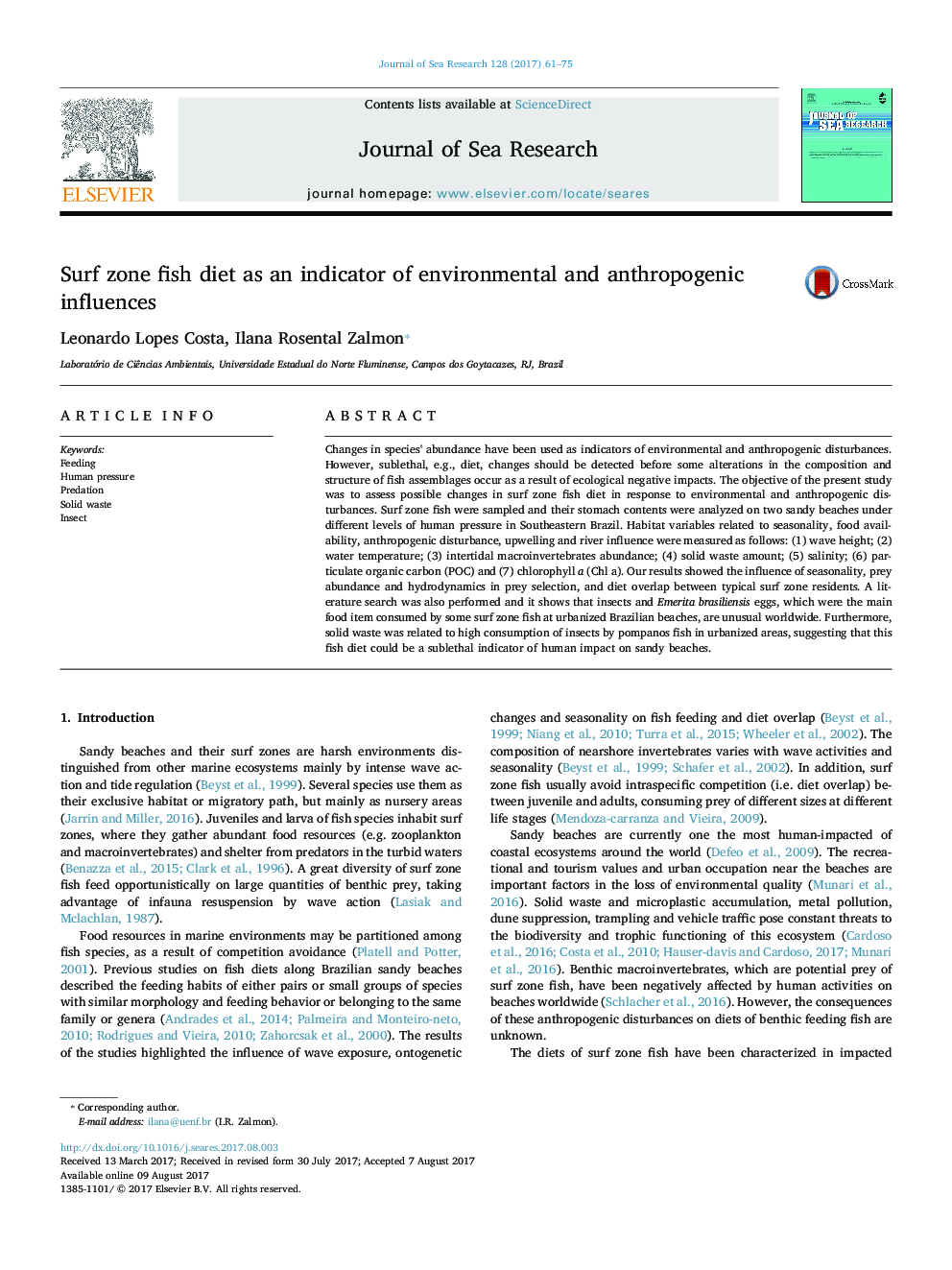| Article ID | Journal | Published Year | Pages | File Type |
|---|---|---|---|---|
| 5766059 | Journal of Sea Research | 2017 | 15 Pages |
Abstract
Changes in species' abundance have been used as indicators of environmental and anthropogenic disturbances. However, sublethal, e.g., diet, changes should be detected before some alterations in the composition and structure of fish assemblages occur as a result of ecological negative impacts. The objective of the present study was to assess possible changes in surf zone fish diet in response to environmental and anthropogenic disturbances. Surf zone fish were sampled and their stomach contents were analyzed on two sandy beaches under different levels of human pressure in Southeastern Brazil. Habitat variables related to seasonality, food availability, anthropogenic disturbance, upwelling and river influence were measured as follows: (1) wave height; (2) water temperature; (3) intertidal macroinvertebrates abundance; (4) solid waste amount; (5) salinity; (6) particulate organic carbon (POC) and (7) chlorophyll a (Chl a). Our results showed the influence of seasonality, prey abundance and hydrodynamics in prey selection, and diet overlap between typical surf zone residents. A literature search was also performed and it shows that insects and Emerita brasiliensis eggs, which were the main food item consumed by some surf zone fish at urbanized Brazilian beaches, are unusual worldwide. Furthermore, solid waste was related to high consumption of insects by pompanos fish in urbanized areas, suggesting that this fish diet could be a sublethal indicator of human impact on sandy beaches.
Related Topics
Physical Sciences and Engineering
Earth and Planetary Sciences
Oceanography
Authors
Leonardo Lopes Costa, Ilana Rosental Zalmon,
